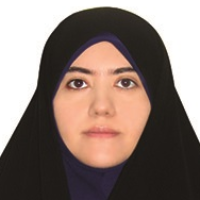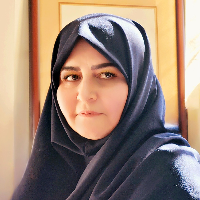An Introduction to Design and Characterization Features In The Lithographic Manuscript Of Majalis Al-Muttaqin, Illustrated By Abdul Jalil (Anonymous Illustrator) And Its Adaptation To Similar Works
One of the most important factors that develop Shiite themes in writing among the people was the lithography of manuscripts. The lithographic illustrated books, which included a large part, were religious books depicting the event of Ashura. Their content, often combined with poetry and imagery, was Maqtal, elegy, mourning, or supplication texts. One of these books is Majalis al-Muttaqin, the illustrated type of which is kept in the Iranian libraries, including the National Library, the Islamic Consultative Assembly, Ayatollah Boroujerdi Library, and so forth as well as in foreign libraries such as Prussian Cultural Heritage in Berlin. Majalis al-Muttaqin was one of the common books in the Qajar era. Compared to other popular books, it is now available in large numbers in Iran. It contains 50 Majlis about divine knowledge, moral and doctrinal principles, jurisprudence, and history of the prophets and Infallible Imams (AS), which were prepared by erudite Mujtahid for sermons and guidance in the holy month of Ramadan. Today, Majalis al-Muttaqin is available as manuscript, movable type or lithography. It has not been edited or reprinted in a new way, and researchers only refer to these resources. The other two copies are illustrated by Aligholi Khoei and Mohammad Ismail Tabrizi. Nevertheless, another manuscript, introducing outstanding design features, is the work of Abdul Jalil. This research aimed to introduce the illustrated lithographic copies of Majalis al-Muttaqin in the National Library and to make a comparative study of the version designed by Abdul Jalil. Therefore, the research aimed to recognize the illustrated lithographic manuscripts of Majalis al-Muttaqin and their artists, to study the design features and Ashura characterizations, and to determine differences and similarities between the designs of the manuscripts’ artists. This is a qualitative descriptive-analytical study that used a library method. The research question is: 1.What are the characteristics of Majalis al-Muttaqin illustrated lithographs and who are their artists? 2. What are the design features and characterizations done by Abdul Jalil in the mentioned manuscript? 3. What are the differences and similarities in the performance of the designers of the Majalis al-Muttaqin? The study of the design and Ashura characters of this manuscript makes us examine the relevant factors. Personality reflects a person's appearance, behavior, moods, beliefs, and even culture; and when reflected in an image, it incorporates the visual culture. Visual characterization shows internal and external attributes in the form of color and shape. Moreover, the artist expresses the character's spiritual qualities using the language of drawings. Visual characterization includes not only the creation of images regarding the character, but also in line with the symbols and visual signs, reflection of environmental elements and also the relationship with other figures. The spiritual characteristics, doctrinal concepts as well as the characteristics of creating a story are transmitted to the viewer. Identifying different elements, including clothing and decorations, facial expressions, body movement, the relationship of scenes with characters, relationship of characters to each other, the position of the character in the scene, the color of clothing and the environment, and even the actions of other elements in the scene towards the desired character can indicate personality traits in illustration. The artist is able to show such features more or less with different techniques in illustration. The results showed that several copies of the Majalis al-Muttaqin are still unknown and have not been yet analyzed. Accordingly, it seems that the 1274 AH manuscript in the National Library and the undated version are the works of Mohammad Ismail Tabrizi and Khoei, respectively. One of the manuscripts from 1284 AH by Abdul Jalil (an unknown artist) has scattered, irregular and dense cross hatching, and characters with short limbs, round and large faces. In addition, in the infidel army, faces are depicted with irregular and thick beards, and facial expressions are exaggerated. Irregular compression is seen in the infidel army. Lack of observance of proportions and the position of perspective along with lack of attention to the figures’ size at different distances and the image background are significant issues to be considered. In this version, expression and dynamism and avoidance of decorations can be seen, especially in the infidel army. The general structure has a diffuse and dense composition, while in other versions, especially the work of Mohammad Ismail Tabrizi, light and shades are seen less or even as dots, and the limbs’ proportions and elongation of the figures are more realistic. In addition, Khoei has used clothes and tools, more background work, latticework, and hatches. All designs have a regular and symmetrical shape. The square framing in most of the images, the Imams outfits, the ideal beauty and lack of emotional reaction in the faces of positive characters, the design of the covering of the face of Imam Hussein (AS), and the diagonal composition are common points.
-
Thematic and Visual Analysis of Three Painted Stories of Ashura (Distorted Incidents) in the Lithographic Manuscript of Asrār Al-Shahādah (1851) Kept in the National Library
, *, Seyed Abutorab Ahmadpanah
Journal of Theoretical principles of Visual Arts, -
"Analysis of the Decorative Forms and Patterns of the 15th Century Valencia Albarellos in Spain Preserved in the Metropolitan Museum of Art in New York"
Mahdiyeh Hashemi *,
Islamic Art Studies, -
The Narration of Images of Husayn Ibn Ali's Martyrdom in Lithographic Versions(Asrar al-Shahadat, Tufan al-Boka, Vasilat al-Nejat)
, *
Journal of Graphic Arts and Painting,




